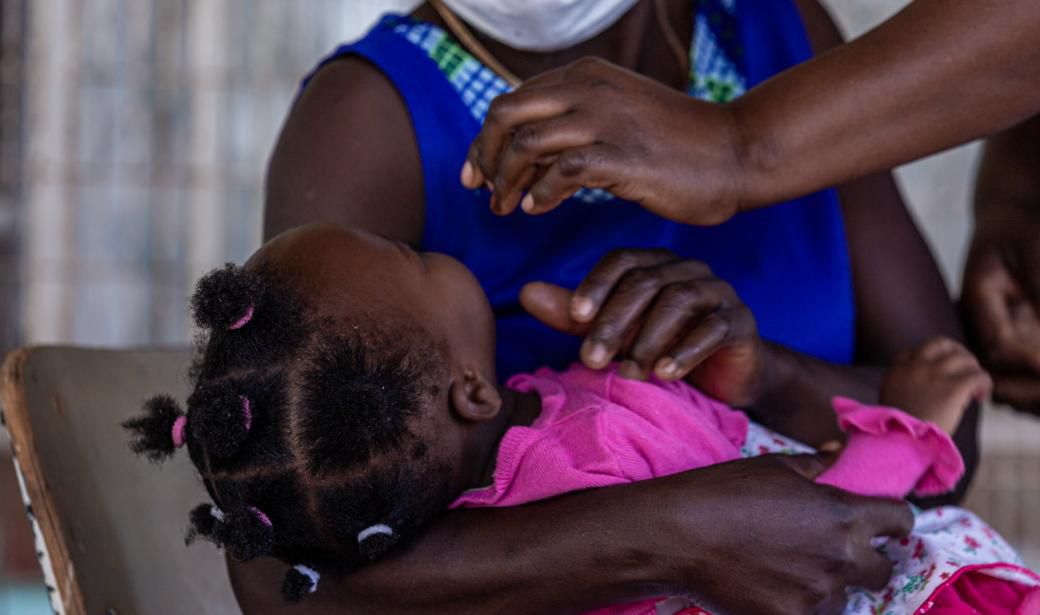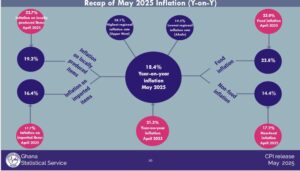
By David King BOISON (PhD)&Raphael Nyarkotey OBU(Prof)
Global cryptocurrency markets have undergone a breathtaking transformation over the past five years, evolving from niche experiments into pillars of the modern financial system. In January 2025, total market capitalization of all cryptocurrencies had climbed to approximately US$3.32 trillion, up from under US$500 billion at the start of 2020 (Fortunly, 2025).
This surge reflects not only retail enthusiasm but also a wave of institutional adoption: asset managers such as BlackRock, Fidelity, and Grayscale have collectively listed over US$75 billion worth of crypto?backed ETFs and trusts, while corporate treasuries—from Tesla to MicroStrategy—hold billions in Bitcoin and Ethereum alongside traditional reserves (Fortunly, 2025; Kraken, 2024).
Parallel to market?cap growth, user participation has expanded dramatically. As of late 2024, more than 560 million individuals worldwide—roughly 6.8 percent of the global population—own or use cryptocurrencies (Kraken, 2024). Venture funding has kept pace: despite a broader “funding winter,” crypto and blockchain startups attracted US$11.5 billion in venture capital across over 2,150 deals during 2024, according to Galaxy Research (Galaxy, 2025).
At the same time, decentralized?finance (DeFi) platforms have unlocked new on?chain credit markets and automated trading infrastructure, driving Total Value Locked (TVL) from US$5 billion at the end of 2020 to over US$190 billion by December 2024 (UPay Blog, 2025).
Central banks have likewise pivoted toward digital currencies in response to these private?sector innovations. A mid?2024 survey by the Bank for International Settlements found that 94 percent of central banks globally are now exploring or piloting retail or wholesale central bank digital currencies (CBDCs) to modernize payment systems and shore up financial resilience (BIS, 2024).
Pilot projects such as the mBridge wholesale CBDC platform and retail launches of e-krona, Sand Dollar, and eNaira underscore that sovereign digital money is becoming an integral component of 21st?century monetary frameworks.
Yet this global momentum stands in stark contrast to Africa’s uneven progress. Although several African nations—most notably Nigeria (which handled US$59 billion of on?chain transaction value between July 2023 and June 2024, ranking second globally) and Kenya, Ghana, and South Africa (all in the top 50 of Chainalysis’s 2024 Global Crypto Adoption Index)—boast vibrant grassroots adoption, the continent as a whole accounted for only 2.7 percent of global on?chain volume during that period, reflecting infrastructure and regulatory deficiencies (Chainalysis, 2024).
Moreover, only about 25 percent of Sub?Saharan African countries have enacted formal crypto?asset legislation, leaving the majority in policy limbo and exposing users to legal uncertainty (Fuje, Quayyum, & Molosiwa, 2022).
With the world’s digital?finance rails accelerating around crypto, Africa faces a pivotal choice: will it bridge the divide—leveraging blockchain to enhance financial inclusion, catalyze youth entrepreneurship, and integrate its economies into the global digital?asset ecosystem—or will patchwork regulation and underinvestment consign the continent to the periphery of the crypto revolution?
The following analysis examines international best practices, diagnoses Africa’s barriers, and lays out a pragmatic roadmap for harmonized regulation and infrastructure development that can unlock the full promise of digital currencies across Africa.
Mapping the global crypto landscape
- The United Arab Emirates: A strategic crypto hub – The United Arab Emirates (UAE) has positioned itself at the forefront of digital?asset regulation by establishing dedicated frameworks that balance innovation with investor protection. In Abu Dhabi’s ADGM free zone, the Financial Services Regulatory Authority (FSRA) first introduced its virtual?asset regime in 2018 and, as of December 2024, has refined its rules to accommodate fiat?referenced tokens and stablecoins under a proportionate, risk?based approach (ADGM FSRA, 2025). In Dubai, the Virtual Assets Regulatory Authority (VARA)—created under Federal Decree Law (4) of 2022—issued its comprehensive Virtual Assets and Related Activities Regulations in early 2023, requiring all service providers to obtain VASP licences, adhere to stringent KYC/AML standards, and maintain robust cybersecurity and governance controls (VARA, 2025). Coupled with a zero personal?income?tax regime on crypto gains and corporate tax incentives for free?zone operators, the UAE’s unified, multi?agency approach has attracted leading exchanges and custodians, cementing its status as a global blockchain hub.
- Singapore: Regulatory clarity under the Payment Services Act – Singapore’s Monetary Authority of Singapore (MAS) has steadily expanded its Payment Services Act (PSA) since its 2020 inception, integrating digital?payment?token services into a single licensing framework alongside e?money, remittance, and merchant?acquisition categories. Amendments effective April 2024 mandates that any entity facilitating digital?payment?tokens—covering everything from centralised exchanges to wallet?providers—must apply for a Major Payment Institution licence or notify MAS within 30 days and secure authorisation within six months (MAS, 2024). Beyond licensing, MAS has introduced robust consumer?protection guidelines, requiring clear disclosure of service terms, reversible transaction processes, and enhanced AML/CFT safeguards consonant with FATF standards. This comprehensive, technology?neutral regime has underpinned Singapore’s emergence as Asia’s leading regulated crypto centre, evidenced by the presence of major global players such as Coinbase and OKX in its licenced ecosystem (Reuters, 2024).
- European Union: The Markets in Crypto?Assets Regulation (MiCA) – The European Union’s Markets in Crypto?Assets Regulation (MiCA), which entered force in two phases—stablecoins in June 2024 and broader crypto?asset services in December 2024—creates an EU?wide “passport” for authorised providers. MiCA encompasses asset?referenced tokens, e?money tokens, and service providers, imposing harmonised rules on transparency, issuer disclosures, prudential requirements, and market?integrity safeguards (European Securities and Markets Authority [ESMA], 2024). In bringing previously unregulated crypto?asset activities into a unified framework, MiCA aims to protect consumers, mitigate systemic risks, and foster pan?EU innovation. Its phased implementation and coordinated supervision by national competent authorities under ESMA’s oversight have already attracted institutional token issuers to jurisdictions such as Luxembourg and Ireland, signifying the EU’s influence as the first major economy to establish a single, comprehensive crypto?regulatory regime.
- India: Top of the adoption index despite policy friction – India exemplifies how mass adoption can outpace regulatory development. In Chainalysis’s 2023 Global Crypto Adoption Index, India secured the top position for the second consecutive year, driven by robust centralized?exchange volumes, decentralized?finance activity, and peer?to?peer trading, despite a 30 percent tax on crypto gains and intermittent show?cause notices to offshore platforms (Chainalysis, 2023; Reuters, 2024). This grassroots enthusiasm has persisted even as India’s Financial Intelligence Unit and the Reserve Bank of India explore stricter licensing models and potential private?crypto bans. The juxtaposition of vibrant user activity and policy ambiguity underscores the urgency for clear, forward?looking legislation that harnesses India’s digital?finance momentum while safeguarding financial stability.
- Brazil: The Digital Real (Drex) and Public?Private Blockchain Pilots – Brazil’s Banco Central do Brasil has advanced its Digital Brazilian Real (Drex) initiative—formalized through May 2021 guidelines—to pilot both wholesale and retail CBDC use cases, including tokenized deposits, government securities, and real?time retail payments (Banco Central do Brasil, 2021). In phase two of the Drex pilot, launched in late 2024, the Central Bank partnered with Banco Inter, Chainlink, Microsoft Brazil, and other consortia to develop blockchain?based trade?finance solutions for agricultural commodities (FinTech Futures, 2024). These experiments, focused on secure, programmable settlement and compliance integration, reflect Brazil’s public?private approach to CBDC innovation and illuminate a path for tokenized real?world asset markets within a regulated, sovereign framework.
Africa’s lag – diagnosing the divide
High grassroots usage, low formal regulation
Africa’s grassroots crypto activity is among the world’s most vibrant, yet this energy has not translated into structured markets or legal certainty. Chainalysis’s 2024 Global Crypto Adoption Index ranks Nigeria second globally, with US$59 billion received on?chain between July 2023 and June 2024, followed by Kenya (21st), Ghana (29th), and South Africa (31st) in global terms—despite Sub?Saharan Africa accounting for just 2.7 percent of world on?chain volume over the same period (Chainalysis, 2024). Yet formal regulation remains the exception. An IMF survey found that only 25 percent of Sub?Saharan African countries have enacted dedicated crypto?asset laws, while two?thirds have various restrictions in place and six nations—including Cameroon, Ethiopia, and Tanzania—maintain outright bans (Fuje, Quayyum, & Molosiwa, 2022). This dichotomy between prolific use and patchwork legality breeds uncertainty, deterring institutional investment and exposing retail users to unmonitored risks.
Infrastructure deficits
Robust digital?asset markets depend on reliable connectivity, power, and device access—areas where Africa still lags:
- Fixed Broadband: As of mid?2023, fixed broadband subscription penetration in Africa stood at only 12 percent, versus 63 percent globally (Omdia, 2023).
- Mobile Internet: In end?2023, just 27 percent of Sub?Saharan Africans subscribed to mobile?internet services, leaving a 60 percent usage gap even where networks exist (GSMA Intelligence, 2024).
- Electricity Access: In 2023, approximately 47 percent of Sub?Saharan Africa’s population had reliable access to electricity, compared to near?universal access elsewhere, perpetuating digital?divide dynamics (Africa Power Transition Factbook, 2024).
- Smartphones: Smartphone ownership—a gateway to crypto apps and wallets—reached only 55 percent of the population by late 2023, far below global averages (Statista, 2024).
These infrastructural constraints impede on?ramp access to regulated digital?asset services, reinforcing reliance on informal, peer?to?peer channels.
Regulatory bottlenecks and uncertainty
Where legislation exists, it often falls short of providing clear, enabling frameworks:
- Nigeria and South Africa have pioneered formal regimes—Nigeria’s ISA 2024 integrates crypto under the SEC’s purview, while South Africa’s FSCA licenses Crypto Asset Service Providers under FAIS (see Section II).
- Ghana has only draft guidelines. The Bank of Ghana’s August 2024 public consultation on digital?asset rules signal a shift from its 2022 ban on financial?institution crypto dealings, but no binding law yet exists (Dadzie?Yorke & Ansah, 2024; Global Legal Insights, 2024).
- Kenya is in “advanced stages” of the Virtual Asset Service Providers (VASP) Bill, which mandates licensing by both the Central Bank and CMA, physical branches for exchanges, and AML/CFT measures; the Bill awaits parliamentary debate (CryptoDaily, 2025; IT Web, 2025).
- Algeria persists with a comprehensive ban under its 2018 Financial Law, prohibiting any cryptocurrency use (Freeman Law, n.d.).
- Egypt classifies crypto as prohibited under Law No. 194 of 2020—no licenses have been issued, and CBE warnings have reinforced an effectively illegal market despite an estimated 11 million users (Dar al?Ifta fatw?; Freeman Law, n.d.; ICLG, 2024).
This regulatory uncertainty—ranging from bans to unfinalized guidelines—stifles domestic innovation, pushes liquidity offshore to unregulated exchanges, and exposes African crypto participants to legal and financial risk.
Impact of the crypto divide
- Cross?border trade settlement under AfCFTA – Intra?African trade increased by 7.2 percent in 2023, reaching US US$192 billion, yet still accounts for only 15 percent of Africa’s total trade—far below Asia’s 55 percent and Europe’s 70 percent (PACCI, 2024). Despite AfCFTA’s promise to deepen regional commerce, most settlement remains reliant on correspondent?bank corridors that impose multi?day delays, layered foreign?exchange fees, and counterparty risks. Without blockchain?enabled on?chain settlement rails, exporters and importers cannot fully capture the efficiency and cost savings that digital?asset infrastructures can deliver.
- Diaspora remittances and stablecoin adoption – Remittances are Africa’s largest source of external finance, with Sub?Saharan Africa receiving US US$54 billion in official flows in 2023 (World Bank, 2024). Yet the average cost of sending US$200 remains a prohibitive 7.9 percent—the highest globally and more than double the SDG target of 3 percent. Regulatory uncertainty and the lack of licensed stablecoin corridors force diasporans into expensive informal channels or mobile?money intermediaries. By contrast, regulated on?chain remittance corridors could cut fees below 2 percent and settle transfers in minutes, amplifying the developmental impact of these critical inflows.
- Tokenized real estate and SME financing – The global real?estate tokenization market was valued at US US$3.5 billion in 2024 and is projected to grow to US$19.4 billion by 2033 at a 21 percent CAGR (Custom Market Insights, 2024). Meanwhile, Sub?Saharan Africa’s SMEs face a US US$331 billion financing gap—4.8 times current formal lending—constraining 44 million MSMEs (International Finance Corporation, 2018). Tokenizing property assets, warehouse receipts, and receivables on blockchain platforms could inject much?needed liquidity into local economies, enabling smallholders and entrepreneurs to access global capital pools at lower cost. Yet minimal legislative support and regulatory clarity in Africa throttle these innovative financing models.
- Youth?driven DeFi innovation and tech employment – In December 2024, Total Value Locked in DeFi protocols surpassed US US$190 billion, yet Africa’s contribution to on?chain developer activity remains marginal (UPay Blog, 2025). Nigeria hosts 3 percent of the world’s blockchain developers—over 300,000 builders—but regulatory ambiguity, infrastructure deficits, and licensing delays drive talent offshore (Mariblock, 2025). This brain drain deprives African ecosystems of the skilled professionals needed to launch and scale homegrown DeFi startups, stunting the continent’s ability to compete in the rapidly evolving global digital?finance landscape.
- Capital flight to external platforms – In the absence of robust local licensing regimes, global exchanges like Binance dominate Africa’s crypto markets, capturing 52–72 percent of regional users in Africa, South America, and the Middle East (CryptoQuant, 2025). This concentration channels fee revenues, trading volumes, and user data offshore—yielding little benefit to domestic tax bases or market?development efforts. It also entrenches a form of “digital dependency,” wherein African traders and regulators must rely on platforms headquartered abroad, further widening the crypto divide.
>>>to be continued
>>>Dr David King Boison is a Maritime & Port Expert | AI Consultant | Senior Research Fellow CIMAG| CEO Knowledge Web Center. He can be reached via [email protected]
>>>Prof. Raphael Nyarkotey Obu is a Professor of Naturopathy | Barrister & Solicitor (The Gambia Bar)| Chartered Health Economist| President, Nyarkotey College of Holistic Medicine & Technology. He can be reached via [email protected]
The post Bridging the crypto divide: Global adoption trends and the African lag (1) appeared first on The Business & Financial Times.
Read Full Story






![Dormaahene hails Mahama, vows to carry him at his back if cedi hits GH?8 to $1 [Video]](https://sportal365images.com/process/smp-images-production/pulse.com.gh/01062025/e9150a95-eb04-4066-bf2d-fef977524ffe.png)







Facebook
Twitter
Pinterest
Instagram
Google+
YouTube
LinkedIn
RSS